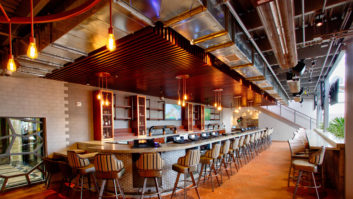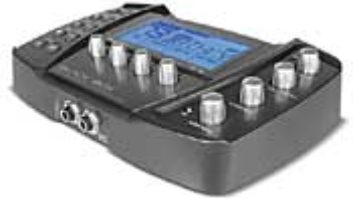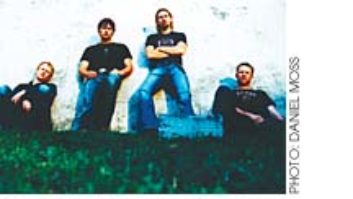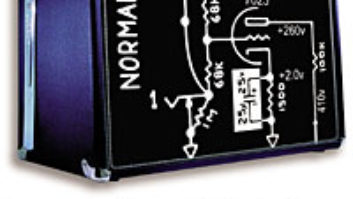
Some years ago, I hired Night Ranger’s Brad Gillis to do somesessions that required a bit of amazing guitar pyrotechnics. He showedup at my studio with nothing more than a vintage Fender Strat and aMesa Boogie Guitar Studio Preamp. I felt a little let down: No racks?No stacks? No pedals? As it turns out, all Gillis needed was that rigand a ¼-inch cable, and he proceeded to lay down some of the mostamazing guitar tracks I’d ever heard. You can hear them now at www.mp3.com/arielrocks.
The Studio Preamp and other Mesa tube preamps that followed (such asthe Quad Preamp and the Triaxis) captured that classic Mesa Mark Seriestone that was part of the sound of performers such as Pete Townshend,the Stones, Larry Carlton, Carlos Santana and a billion other artists.However, the earlier preamps couldn’t duplicate the raw, aggressivemodern sound of Mesa’s popular Rectifier Series amps, favored by groupssuch as Limp Bizkit and Soundgarden.
With that in mind, Mesa started a three-year R&D project todevelop a box that would not simply model, but could actually createthe blazing fire of a Recto Stack without the volume or hassles of ampmiking. The result is the $999 Rectifier Recording Preamp, atwo-rackspace, steel-encased chassis that seems to weigh as much as thestacks it replaces. But beyond acting simply as a preamp, the unit’srecording outputs are designed to capture the sound of a tube ampreacting to a dynamically active speaker load, with a studio micreproducing all of the nuances in detail.
You won’t find any digital circuits here. It’s all analog, with six12AX7 tubes providing the punch of 12 Class-A triodes. Even the rearpanel is nearly overwhelming in the interfacing it provides, with twobalanced TRS stereo recording outs, two stereo “live” outsto connect directly to a power amp, effects loop output sends andreturns (with a wet/dry effects control, ¼-inch switch outputs forthe included channel switching and “solo” footswitch), a“modern” mode output to use with Mesa’s Rectifier Stereopower amp and an extra input jack (paralleled to the front-panel input)for permanent in-rack installs.
The front panel is no less versatile. Each of the switchable twochannels has gain treble, mid, presence and master pots. Both shareoutput section controls such as a “live/bright” and“warm/record” preamp voicing switch, channel 1/2 switchingfor non-footswitch channel selection, and output level knobs for sololevel and the recording and live output jacks.
Although each channel’s knobs are similar, their sound is anythingbut. Channel One — the “clean” channel — alsoincludes switches for bright boost, -3dB pad and a three-modeClean/Fat/Brit tone switch, with the latter kicking in a circuit fromMesa’s Road King amps for a wider tonal palette in recordingsituations.
Rather than offering the edgy, in-your-face sound that Recto isknown for, Channel One provides a smoother effect for blues, rock andeven country rhythm parts. Of course, amps are meant to be abused, andif nasty is what you’re looking for, then crank that gain knob up to 11and you’ll have no shortage of distortions — lead or rhythm.Using high-gain settings in the Clean and Fat modes, however, resultedin an overwhelming wash of low bass that muddied up the sound. Butturning the bass control way down restored the tonal balance. With morelow-mid emphasis and a low treble bump, the Brit mode was useful forsingle-note soloing, power chording or crunch rhythms.
The fun really kicked in on Channel Two, which also offers threetonal modes (Raw/Vintage/Modern) to play with. Here, users should beaware that there’s a small volume dip to the record outputs whenswitching into the Modern mode, so don’t fall into that “louderis better” trap when making A/B/C comparisons between modes.Despite its name, the Raw mode offers a lower-gain and less saturatedsound that worked equally well in blues rhythms or smooth solos.
The Vintage and Modern modes are closest to what people expect froma Mesa Rectifier amp, and give users a higher-gain punch with a choiceof standard Recto sounds or a more aggressive, attenuated top end inthe Modern position. Here, I encountered the best sounds by keeping thegain setting in the 9:30 to 2:00 range; less than that didn’t pack anywallop, and much more than that seemed way over the top, although it’shard to say what your music requires. That said, very smallvariations in the gain (within the above range) were capable of hugetonal changes, depending on the master setting, of course. So here, alittle studio experimentation really pays off.
Speaking of settings, the preamp’s manual, which is very goodoverall, provides pages of suggested settings for different sounds,although there are no blank sheets so users can easily archive theirown “presets.” Also, as this is a studio product, I wishthe unit’s balanced recording outputs were XLR (or Neutrik Combo)rather than ¼-inch TRS, but this is a minor point, as is a lack ofa headphone output to practice or silently audition sounds in thestudio. Maybe next time.
The Mesa Rectifier Recording Preamp doesn’t create every amp soundon the planet and it doesn’t pretend to. But for disciples of thatelusive Recto sound, this is a serious tool that provides that tone(and a few others, as well) in a convenient recording package.
Mesa Engineering; 707/778-6565; www.mesaboogie.com.





